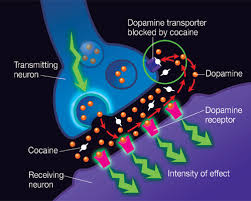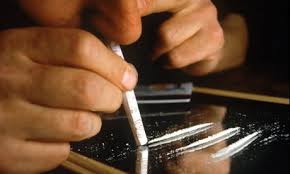Cocaine and Crack Abuse are great Threats
Cocaine and Crack Abuse are great Threats: The Dangers it brings on your Health

Cocaine and Crack Abuse are great Threats. It can be administered to the body either through injection, snorting or smoking.
The history of cocaine is well known and how it affects the good health of our societies. Cocaine is a very powerful addictive stimulant drug that when allowed to settle in anyone’s life, then devastations and frustrations will follow as the immediate consequences. Whichever way you look at it, cocaine is not good. No single advantage can be attached to this drug. As a matter of fact cocaine and crack abuse are great threats of life. The powdered hydrochloride salt form of cocaine can be snorted or injected as a solution of water. And when we talk of crack cocaine, it means that, this cocaine base has not been neutralized by an acid to transform it into a hydrochloride salt. When that is done, this form of cocaine comes in a rock crystal which can be heated to produce vapors, a product which can be smoked. The term “crack” therefore refers to the crackling sound produced by the rock as it is heated.
Cocaine and Crack Abuse are great Threats: How is Cocaine Abused?
According to the experts at AWAREmed Health and Wellness Resource Center, cocaine abuse is in most cases considered in relation to the mode of its administration. There are three main routes that are commonly used and they may include the following:
- Snorting – this is the process of inhaling cocaine powder through the nose, where it is absorbed into the bloodstream through the nasal tissues.
- Injection – in this case cocaine in mixed with water and the solution is then injected into the body using the needle to release the drug directly into the blood streams.
- Smoking – this involves inhaling cocaine vapor or smoke into the lungs, where absorption into the bloodstream is as rapid as by injection.
Irrespective of which method you choose, the dangers remain the same and in all the methods of administration can lead to addiction and other chronic and severe health problems, including increasing the risk of contracting HIV and infectious diseases says doctor Akoury MD and also the founder of AWAREmed Health and Wellness Resource Center.
- The intensity and duration of cocaine’s effects, which include increased energy, reduced fatigue, and mental alertness, depend on the route of drug administration.
- The faster cocaine is absorbed into the bloodstream and delivered to the brain, the more intense the high.
- Injecting or smoking cocaine produces a quicker, stronger high than snorting.
- On the other hand, faster absorption usually means shorter duration of action.
- The high from snorting cocaine may last 15 to 30 minutes, but the high from smoking may last only 5 to 10 minutes.
In order to sustain the high, a cocaine abuser has to administer the drug again. For this reason, cocaine is sometimes abused in binges taken repeatedly within a relatively short period of time, at increasingly high doses.
Cocaine and Crack Abuse are great Threats: Effects of Cocaine to the Brain
Without missing the words, cocaine is a strong central nervous system stimulant that raises the levels of dopamine. This is a brain chemical which is associated with pleasure and movement, in the brain’s reward circuit. And because dopamine facilitates communication in some brain cell commonly known as neurons, therefore dopamine is released by neurons to respond to signals like the smell or taste of good food and then it is recycled back into the cell that releases it which in return will shut off the signal between neurons.
Cocaine acts by preventing the dopamine from being recycled, causing excessive amounts of dopamine to build up, amplifying the message, and ultimately disrupting normal communication. It is this excess of dopamine that is responsible for cocaine’s euphoric effects. With repeated use, cocaine can cause long-term changes in the brain’s reward system and in other brain systems as well, which may eventually lead to addiction. Further to this with repeated use, tolerance to the cocaine high also often develops. This has been confirmed from various reports that many cocaine addicts often seek to get high by consuming more but they fail to achieve as much pleasure as they use to from their first exposure. This means that some users choose to increase their dose in an attempt to intensify and prolong the euphoria, but this can also increase the risk of adverse psychological or physiological effects.
Cocaine and Crack Abuse are great Threats: The Adverse Effects of Cocaine on Health
There is no doubt that cocaine abuse impact on health negatively, like for instance:
- Cocaine compresses blood vessels
- Dilates eye pupils
- Increases body temperature
- Heart rate
- Blood pressure
It can also cause headaches and gastrointestinal complications such as abdominal pain and nausea. And because cocaine tends to decrease appetite, chronic users can become malnourished as well.
Cocaine and Crack Abuse are great Threats: Effects based on the mode of administration
Like I had indicated before that, cocaine is administered in to the body primarily in there different ways. These methods of taking cocaine can produce different adverse effects. like for instance:
- Regularly snorting cocaine, for example, can lead to loss of the sense of smell, nosebleeds, problems with swallowing, hoarseness, and a chronically runny nose.
- Ingesting cocaine can cause severe bowel gangrene as a result of reduced blood flow.
- Injecting cocaine can bring about severe allergic reactions and increased risk for contracting HIV and other blood-borne diseases.
- Binge patterns of use may lead to irritability, restlessness, anxiety, and paranoia.
- Cocaine abusers can suffer a temporary state of full-blown paranoid psychosis, in which they lose touch with reality and experience auditory hallucinations.
Doctor Akoury emphases that it doesn’t matter how it is administered or how frequently cocaine is used, in all these users can experience acute cardiovascular or cere-brovascular emergencies, such as a heart attack or stroke, which may cause sudden death. Remember that most cocaine-related deaths are often as result of cardiac arrest or seizure followed by respiratory arrest. All these can be brought to manageable levels if we all pool together and begin doing the right things. You may not know conclusively what to do and that is why doctor Akoury founder this health facility to help you stay healthy. You can schedule for an appointment with doctor Dalal Akoury and together with her team of experts they will professionally offer lasting solution to your individual conditions.
Cocaine and Crack Abuse are great Threats: The Dangers it brings on your Health




